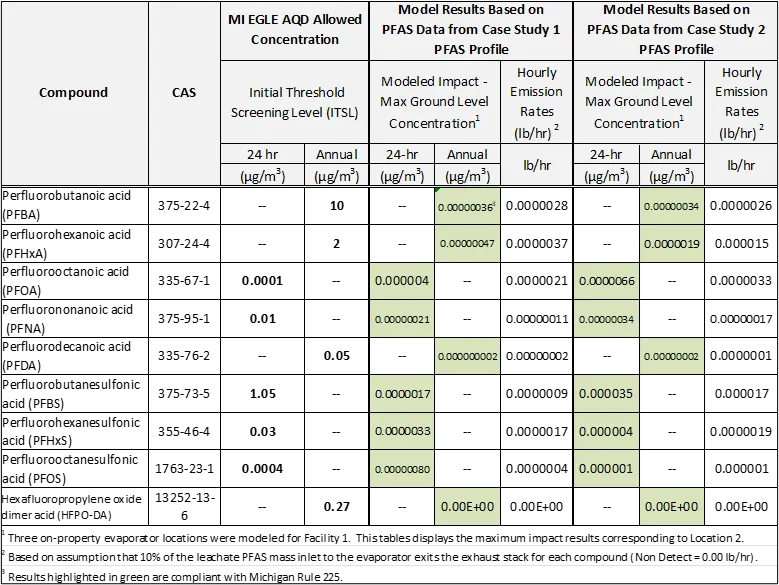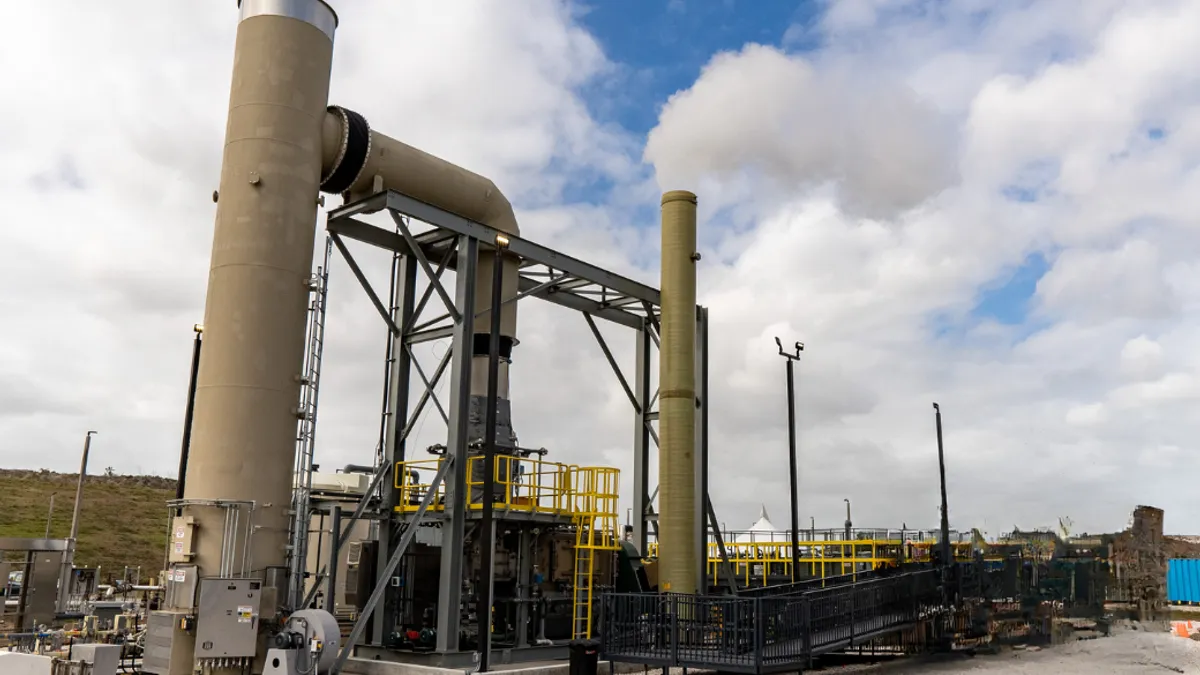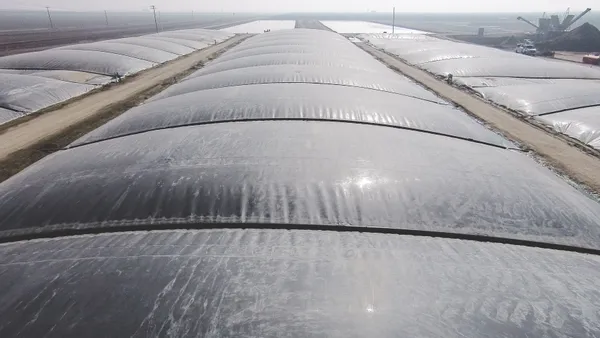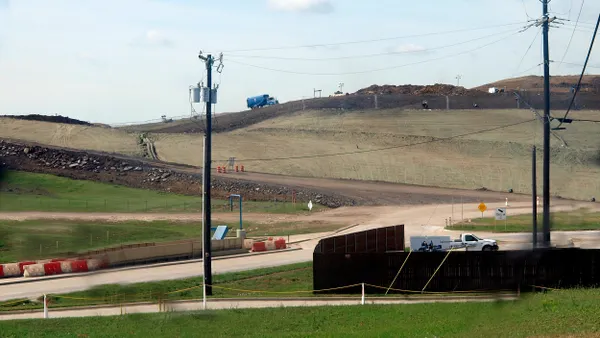PFAS Concentration in Landfill Leachate
Growing concerns about Per- and Polyfluoroalkyl Substances (PFAS) and their potential health risks are driving substantial changes in the management of landfill leachate. While landfills do not generate PFAS, they contain high levels of these substances as they are common depositories for consumer products and other wastes containing these chemicals. As a result, landfill leachate is often one of the wastewaters with the highest concentration of PFAS. Today, many landfills utilize wastewater treatment plants (WWTPs) for leachate disposal, yet most WWTPs are not designed to treat PFAS and are growing concerned by the changing discharge regulations at the state and local level.
Onsite evaporation for PFAS sequestration
Shifting from offsite disposal to onsite treatment for landfill leachate allows for reduced risk for both landfills and WWTPs and creates a closed loop system to keep PFAS from leaving the landfill site. Through stringent testing and third-party validation, Heartland has been evaluating and assessing adiabatic evaporation technology as a viable and effective treatment method for the separation and concentration of PFAS.
A series of case studies were conducted at several Heartland Concentrator™ project sites involving sampling of the system’s feed and residuals utilizing EPA Method 1633. A mass balance approach was performed to determine the amount (lb/hr) of PFAS in the feed and residuals for regulated PFAS compounds, including: PFOA, PFOS, PFNA, PFHxS, PFBS, HFPO DA (Gen X), PFBA, PFHxA, and PFDA, all highly prevalent in landfill leachate.

Through the mass balance approach, validated by HDR, inc., Heartland was able to validate the concentration and sequestration of the targeted PFAS within the system, demonstrating the mass of PFAS in feed and residual being nearly identical.
Dispersion Modeling of PFAS Concentration via Adiabatic Low-Temperature Evaporation
Mass balance estimates confirmed high retainment of PFAS with the Heartland Concentrator™; however, as part of the continued effort to understand the fate of PFAS through evaporation, dispersion modeling was used to evaluate potential air emissions of PFAS compounds from an adiabatic leachate evaporator.
The State of Michigan was selected as the location for the analysis, as it is one of a few states that has enacted restrictions on PFAS air emissions, having the most stringent health-based screening levels for PFOA and PFOS in the country. The specific goal of the modeling was to determine whether PFAS compounds, potentially emitted to the air though the exhaust stack of a typical leachate evaporator, would comply with the health based “Initial Threshold Screening Levels” (ITSLs) set forth in the Michigan Department of Environment, Great Lakes, and Energy (EGLE) Air Quality Division (AQD) air pollution control Rules 225 – 233.
For each Model Facility, the most recent two years of available meteorological data (2022-2023) were used to derive results. Although not included in this report, similar tables were created for Model Facilities 2 and 3.

The highest ambient impact of any PFAS compound versus a Michigan allowed concentration was found to be PFOA, corresponding to the Case Study 1 emission profile located at Model Facility No. 2. This impact was 0.0000093 µg/m3, which is about 9% of the Michigan ITSL for PFOA of 0.0001 µg/m3. All other impacts were less than 1% of the state limits, with most several orders of magnitude below the limits.
Conclusion
While every evaporator installation will be subject to site-specific conditions, the modeling results summarized herein were based on conservative inputs and provide a high confidence that any ambient air impacts from a typical adiabatic leachate evaporation system would be well below the most stringent state-based allowable ambient air concentrations. The modeled ambient concentrations were substantially below all Michigan ITSLs, as well as health-based thresholds from all other States.
For the full story on PFAS Separation including series of dispersal modeling and ambient air testing, request Heartland’s full whitepaper here.










